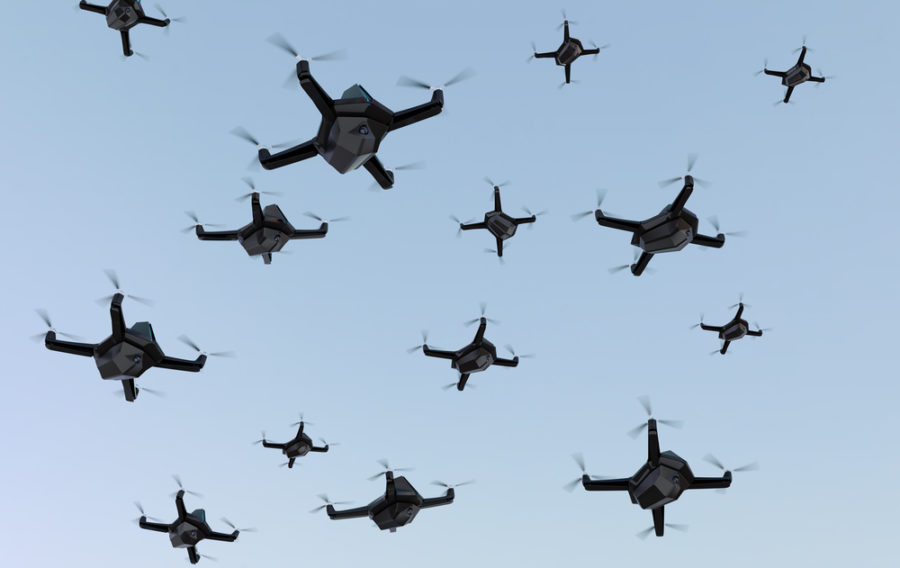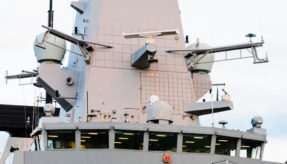
Writing for Defence Online, Richard Worthington, partner and patent attorney at European intellectual property firm Withers & Rogers, examines how blockchain can enhance swarm robotic technology.
The Ministry of Defence’s latest review: ‘Defence in a Competitive Age’ indicates a clear shift in focus from boots-on-the-ground to technological advantage – but where are the next innovations coming from? Swarm robotics holds considerable promise, but what can be done to ensure these autonomous systems are fit for purpose?
Swarm robotics is basically a description for multiple robots making a coordinated effort to complete a task autonomously. They behave like a swarm of ants or bees in the sense that whilst appearing to operate in a disorganised and random fashion they are able to make collective decisions and act upon them in a coordinated way. Such systems could bring safety benefits in the field of operations by avoiding the need for soldiers or military armaments to enter dangerous areas.
Despite their potential benefits, swarm robotics systems have not yet been widely deployed. UAVs were used in the 2018 attack on a Russian airbase in Syria, but they were not coordinated and the mission was unsuccessful. Among the key problems associated with swarm robotics systems is difficulty in achieving consensus, due to the distributed nature of decision making, and a tendency for individual robots to turn rogue; compromising the military objective – a situation known as the Byzantine Generals Problem.
Recent technological developments have led to the use of integrated blockchain or distributed ledger technology to enhance the efficacy and reliability of swarm robotics systems in military applications. The technology, which is most commonly associated with cryptocurrency trading and bank transfer systems, is useful because it is ultra-secure and the data in the chain cannot be altered. To enhance their security in operation, a consensus mechanism such as proof of work (POW) or proof of stake (POS) is incorporated into the blockchain coding to verify that each robot is behaving as it should.
Other coding enhancements have enabled the swarm to reach consensus by discarding votes in the form of tokens coming from unfamiliar addresses and establishing permissions to prevent malicious robots from seeing that a decision-making process is taking place.
Blockchain-based smart contracts can also be employed to reward robots that provide the most accurate information and demonstrate the right behaviours. For example, robots can be trained to provide accurate information by ensuring that only those that return information that meet a specific criteria defined in the smart contract are rewarded. The information gleaned from this activity can then be used to develop the blockchain further, and so the swarm robotics system becomes self-governing.
From a patent perspective, those responsible for developing blockchain-enabled swarm robotics systems, including the coding needed to operate them, should protect their innovations at the earliest opportunity, to strengthen their position in tenders and collaborations, and to avoid the risk of a disclosure preventing future patent protection. As this field of R&D is still in its infancy, they could also end up patenting a technology that becomes ‘standard essential’ in the future, which would have considerable commercial potential in the future.
With the benefit of integrated blockchain technology, swarm robotics systems could be used in a variety of settings where their powers of spatial organisation and navigation, combined with their ability to make collective decisions, could improve efficiency and safety. Their success in military operations is not yet proven, but it is getting closer by the day.
If you would like to join our community and read more articles like this then please click here
blcokchain Richard Worthington swarm robotics Withers & Rogers







